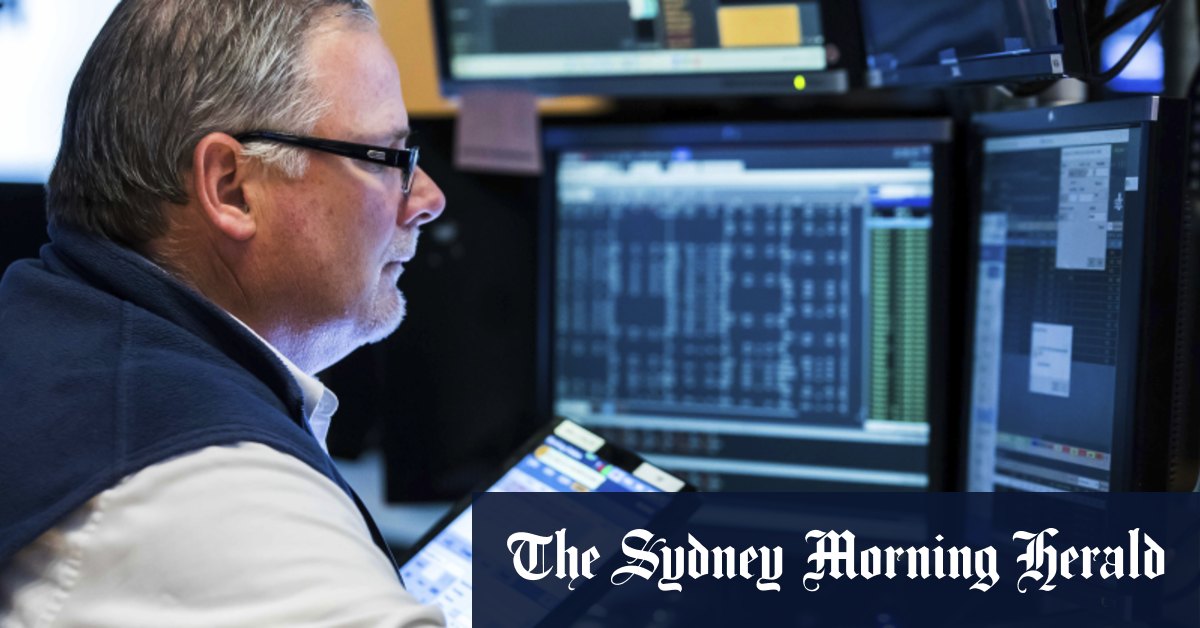
More types of companies are reporting how much they earned during the spring, broadening out from the banks that dominated the earliest part of the reporting season.
Toy company Hasbro rose 0.7 per cent after it reported stronger profit than analysts expected. Oilfield services provider Halliburton added 2.1 per cent after its profit and revenue topped forecasts. Netflix jumped 8 per cent in after-hours trading after the company reported better-than expected results and a smaller subscriber loss than analysts had feared.
Twitter rose 2.8 per cent after a court in Delaware agreed to quickly schedule a lawsuit that could force billionaire Elon Musk to make good on his agreement to buy the company.
Bitcoin continued to march higher, rising 4.2 per cent over the past 24 hours to $US23,335.65 on Bitstamp at 9.46am AEST.
IBM, though, fell 5.2 per cent despite reporting stronger revenue and earnings than expected. The company’s profit margins fell short of some analysts’ expectations, and concerns are rising about the effect of the dollar’s recent strength against other currencies. While a stronger dollar helps limit inflation at home, it can also undercut the value of sales made abroad by US companies.
The dollar’s value eased a bit against other currencies Tuesday, which allayed some fears for the market. So too, counterintuitively, may have a report that showed an extreme level of pessimism among investors. The Australian dollar was 1.3 per cent higher at 69.01 US cents at 6.49am AEST.
Expectations for economic growth and profits have plunged, according to the latest results from Bank of America’s monthly survey of global fund managers. That has them sitting on their highest cash levels since 2001 and their lowest allocations to stocks since 2008.
“Full capitulation” is how Michael Hartnett, chief investment strategist, called it in a BofA Global Research report. Contrarian investors see such dire levels of pessimism as an encouraging signal, which could presage better times ahead if everyone who was going to sell has already.
Given all those fears, though, big swings have become routine on Wall Street recently. The S&P 500 has been flip-flopping between weekly gains and losses over the last month, after a rough run where it dropped in 10 of 11 weeks. The swings have even hit hour to hour, with early morning gains quickly evaporating by the afternoon. On Monday, an early 1 per cent gain gave way to a 0.8 per cent loss.
On Tuesday, the S&P 500 ended 105.84 points higher at 3,936.69. The Dow jumped 754.44 points to 31,827.05, and the Nasdaq rose 353.10 points to 11,713.15. The Russell 2000 picked up 60.91 points to 1,799.32.
Loading
On Thursday, the European Central Bank is expected to raise interest rates for the first time in 11 years in hopes of knocking down high inflation.
The Federal Reserve has already raised rates three times this year, and by increasing amounts each time. It will announce its next increase next week, and the only question among investors is whether it will go with another increase of 0.75 percentage points or a colossal hike of a full point.
The yield on the two-year Treasury, which tends to track expectations for Fed action, rose to 3.24 per cent from 3.17 per cent late on Monday. The 10-year yield rose to 3.02 per cent from 2.96 per cent.
with AP








